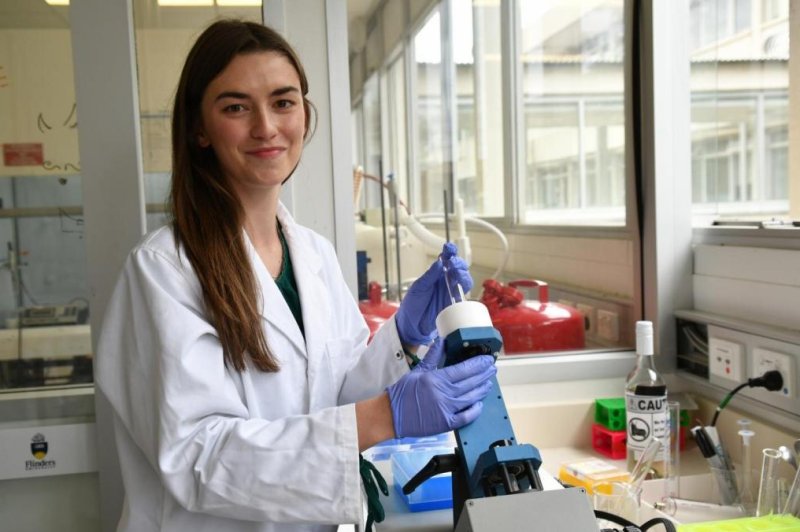Flinders University researcher Jessica Phillips poses with the vortex fluidic device that helped scientists extract and process DNA strands from tissue samples stored in formaldehyde. Photo by Flinders University
Jan. 31 (UPI) -- The answers to questions about the origins and evolutionary history of a variety of plant and animals, living and extinct, are hiding in the DNA strands of museum specimens.
Scientists in the United States and Australia have developed a new way to extract and analyze DNA from samples stored in formaldehyde, which can damage genetic material.
For their proof of concept study, researchers extracted DNA from an American lobster preserved in formaldehyde. Their technique relied on a vortex fluidic device, which breaks apart proteins, freeing previously trapped DNA fragments.
"DNA extraction is achieved by processing the preserved tissue in an enzyme solution in the VFD," Jessica Phillips, doctoral student at Flinders University in Australia, said in a news release. "This enzyme breaks apart the proteins, releasing the DNA which can be analyzed. By using the VFD we are able to accelerate this process from days to hours."
"For 150 years these samples have been preserved in formaldehyde which can damage the DNA and also make DNA difficult to recover," Phillips said. "We used mechanical energy in a vortex fluidic device to accelerate the extraction by processing the preserved tissue in an enzyme solution in the VFD."
Traditional methods for rescuing DNA from tissue samples stored in formaldehyde are quite slow and inefficient. The use of the mechanical energy of a vortex fluidic device boosts the catalytic activity that fuels reactions between the enzyme proteinase K and the proteins that have become tangled with DNA strands as result of exposure to formaldehyde.
"The results provide a roadmap for exploring DNA from millions of historical and even extinct species," researchers wrote in their paper, published this week in the journal PLOS One.















